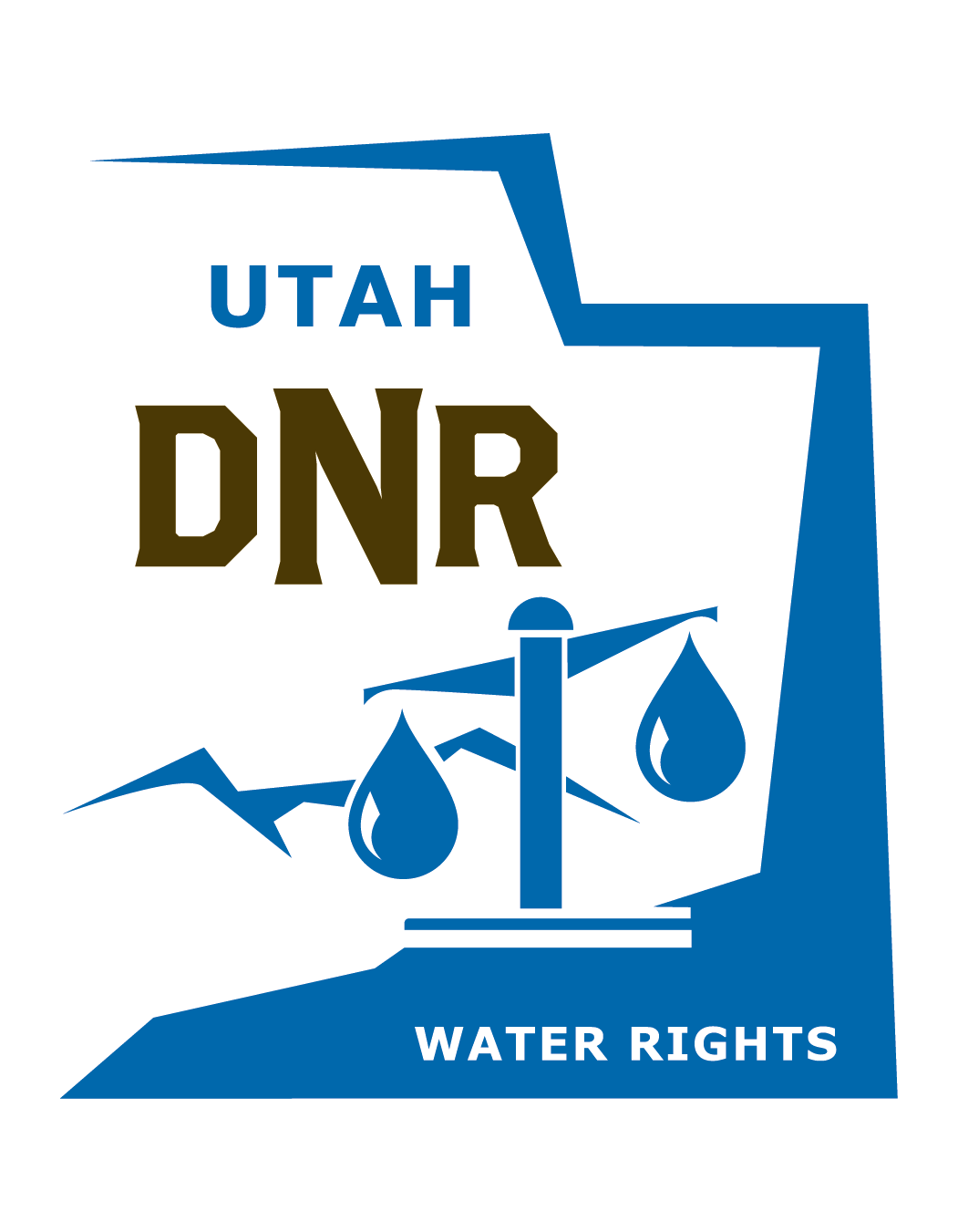Transfer Index Numbers (TINs)
Updated: August 6, 2013
To calculate the TIN of a proposed change application, an online
evaluation tool is available.
Under the U.S. Public Land Survey system, the land is divided into township, range, and section. Each section is a square measuring approximately one mile
on each side. In this management plan, each section in the valley fill of the Salt Lake Valley is assigned a Transfer Index Number which is based on the
index values of every water use within that and each of the eight adjacent sections.
There are specific rules for calculating a section's TIN, which has units of acre-feet per year. A TIN may change over time as the water rights situation changes.
The primary rules for calculating a section's TIN are outlined below.
- Only approved and perfected, i.e. certificated, water rights are evaluated. Approved (but unperfected) changes on perfected water rights are not evaluated because of double accounting issues. Water rights under active litigation are not evaluated.
- Only wells (both flowing and pumped) are evaluated. Tunnels, springs, drains, and other types of non-well, "underground" diversions are not evaluated.
- Index values for indoor domestic uses are calculated at 0.45 acre-feet per family.
- Index values for stock-watering uses are calculated at 0.028 acre-feet per equivalent livestock unit (ELU).
- Index values for irrigation uses are calculated at 5 acre-feet per acre of irrigated land. If there is a sole supply acreage listed, the irrigation index value is equal to the number of sole supply acres multiplied by an irrigation duty of 5.
- Index values for domestic, stock-watering, and irrigation uses are calculated by dividing the index value of a claims group by the number of supplemental rights in that group.
- Index values for municipal uses are calculated by multiplying the flow rate (cfs) by 362.
- Index values for industrial, mining, and other uses are calculated by multiplying the flow rate (cfs) by 181.
- The total index value for a water right is the sum of the index values of all listed uses but will not exceed the maximum diversion volume (if listed on the right) nor the maximum flow rate (cfs) multiplied by 724.
- The total index value for a particular water right is divided evenly between each point of diversion listed under the water right.
- Index values are calculated for each point of diversion in a section and summed up for the section in question and every adjacent section. This has been done for section 11 in the example below. (Note: The TIN for section 11 is not 500.)
3
800 | 2
1600 | 1
2100 |
10
2600 | 11
500 | 12
1200 |
15
3300 | 14
1100 | 13
900 |
Figure A: Evaluating water rights in all adjacent sections
- A section's TIN is the maximum sum of any four adjacent section index values. In the figure below, section 11 has a TIN of 7,500 acre-feet per year.
3
800 | 2
1600 | 1
2100 |
10
2600 | 11
500 | 12
1200 |
15
3300 | 14
1100 | 13
900 |
Sum = 5500
|
3
800 | 2
1600 | 1
2100 |
10
2600 | 11
500 | 12
1200 |
15
3300 | 14
1100 | 13
900 |
Sum = 5400
|
3
800 | 2
1600 | 1
2100 |
10
2600 | 11
500 | 12
1200 |
15
3300 | 14
1100 | 13
900 |
Sum = 7500
|
3
800 | 2
1600 | 1
2100 |
10
2600 | 11
500 | 12
1200 |
15
3300 | 14
1100 | 13
900 |
Sum = 3700
|
Figure B: Determining the TIN for a particular section by calculating the maximum sum
|
